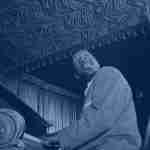When you’re first starting out on your journey learning how to play jazz, you’ll typically come across two different camps of how to go about things…
One camp believes that you need a lot of music theory, particularly scales and modes, along with an understanding of how modes are applied to chords. Many refer to this approach as Chord-Scale Theory.
Now the other camp likes to talk about learning phrases from your heroes – licks that you steal from your favorite players, giving you something that you can use as your own in a similar spot that they used it in.

Let’s just get this out front and center – Both camps are useful.
So rather than thinking about them as opposites and dedicating yourself to one or the other, think about them as two different perspectives that you can draw from, one being more theoretical, and the other being more intuitive and practical.
They both have merit and they both have their faults…
You see, if you’ve been around Jazzadvice for a while, you know how we frequently talk about the shortcomings of Chord-Scale Theory and that to really understand jazz tunes, you need more than a bunch of scales, you need a deep understanding of harmony.
But what about the other side?
If you just copy lines from your favorite players, will you become the player you wish to be? Or are there holes in this approach too and more details to the process that are crucial to your understanding?
Just like Chord-Scale Theory, copying phrases from your heroes is not the end-all-be-all of how to play jazz, especially the way that it’s often prescribed in jazz education today.
So let’s talk about this…
Just learn ii V Licks in all keys, right?
When I was around 18 years old, I started to realize that there was something wrong with the approach that I’d been exposed to – that trying to improvise jazz purely from a chord-scale based approach would never yield the types of lines my heroes played.
No matter how hard I tried, mixing up notes from a scale just didn’t quite sound right. I certainly was missing something…
And the answer I heard to this problem was the same across the board: you need to transcribe your favorite players and take the best lines and learn them in all 12 keys.
But here’s the issue…the only types of lines that anyone seemed to talk about, and the only ones that made any sense to me at the time, were lines built around a single familiar progression: The ii V I progression.

So, frantically, I sought out any ii V I line I could get my hands on, scouring the internet, buying books supposedly packed with the most modern approaches to ii Vs, and extracting them from solos in transcription books as I hadn’t truly learned the value of transcribing for myself yet.
I built up an entire binder of ii V I lines, and printed them out in all 12 keys because there was no way I could transpose these in my head.
I got to work, drilling these long 4 measure ii V7 I lines over an over until I was blue in the face, and in some small ways, it did help me.
I started to see and hear connections between the chords that previously eluded me. My fingers built up muscle memory as to how to approach a ii V I, and any time I found this progression in a tune I had something to insert that sounded better than if I had just randomly mixed up notes from a mode.
But what didn’t happen is improvisational freedom, or any semblance of spontaneous creation.
So yet again, I was back to square one and what I had heard must have been right, that copying wasn’t improvisation and I needed to double down on the Chord-Scale Theory approach.
Unfortunately, I had given up too soon, and while this “learn ii V Is in all keys approach” was limited and flawed, with a bit more understanding of the process, I could have moved beyond this lick based playing and moved closer toward the improvisational freedom that I was after…
The Mistake Everyone Makes With Jazz Language
These days, most people know that transcribing is part of the learning process, and that learning jazz language in all keys has tremendous benefit.
But most people still make one big mistake that’s holding them back tremendously, and it goes like this…
They transcribe a solo or part of a solo, and then, like I did when I was younger, they extract a 4 measure chunk of notes over a ii V7 I progression…

Then, leaving the line entirely intact as not to disturb the essence of the perfect line, they practice it verbatim over and over, trying desperately to take it through all keys, usually writing it out to aid in the process.
So what’s wrong with this picture?
Looking back, it seems so simple, so obvious I could kick myself…but in the thick of it, you never realize what you’re doing wrong.
So here’s the thing…
The way you practice is the way you perform and if you practice big 4 measure lines over and over in the exact same way, well, that’s what you get – a big four measure line that you have to insert into a very specific place in the chord changes.
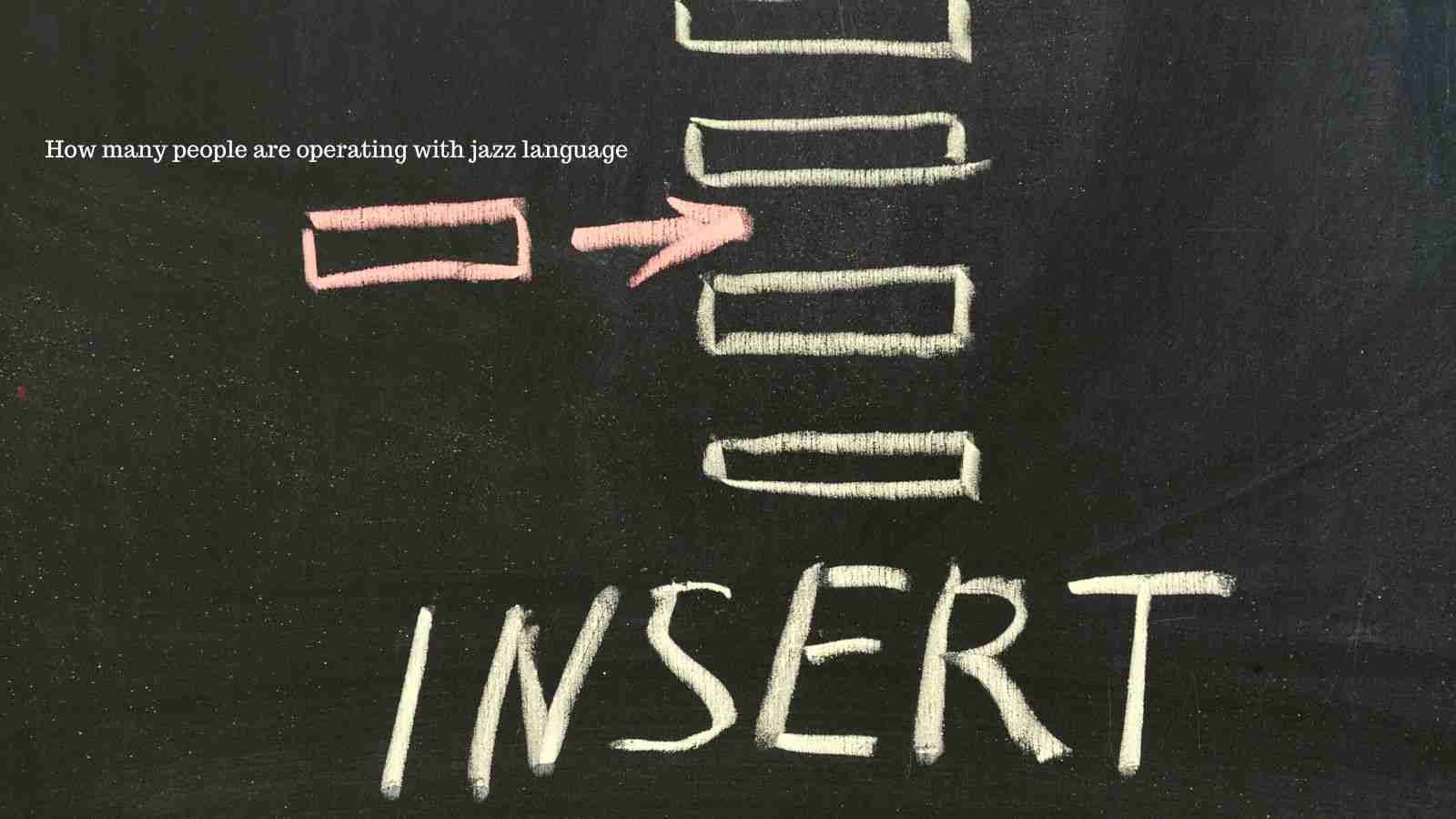
No variation, little understanding behind the line, just a big chunk of notes that has to be put in one single spot.
So if this isn’t the way to practice jazz language, what is?
How to get beyond ii V7 licks
Let me start by saying, learning a ii V line in all keys is a good thing. But remember, a ii V lick, or any other longer piece of language, is just a starting place. You have to learn to get beyond it…
You need multiple perspectives and multiple entry points.
And I could try to describe what this means all day, but it’s easier just to show you and take you through the entire process…so imagine we’ve just transcribed a chorus from Charlie Parker’s solo on Confirmation.
And what he plays over the bridge of the tune catches our ear (notated down an octave to make it more readable)…

So now we have a great ii V7 I line, but where do we go from here? How do we acquire multiple perspectives on this information and multiple entry points into the line?
I’ve found that to do this very quickly and directly, especially on a ii V7 I, simply ask yourself 5 main questions and the answers will put you on the right path…
- What is the soloist playing over the ii chord?
- How is the soloist transitioning from ii to V7?
- What are they playing over the V7 chord?
- How are they transitioning from V7 to I, how they resolve the V7 chord?
- What is the soloist playing over the I chord?
And then, once you ask these 5 general questions, start to ponder these sub-questions for each larger question…
- What is the soloist playing over the ii chord?
- What type of content? Is it scalar, an arpeggio, a cell etc?
- Is there an interesting shape?
- What’s special or unique about it?
- How is the soloist transitioning from ii to V7?
- Are they targeting a specific note, from a specific note?
- Are they moving into a specific tension?
- Are they using common tones?
- What are they playing over the V7 chord?
- What type of content is it?
- What alterations are they using?
- What’s special or unique about it?
- How are they resolving the V7 chord?
- What chord-tone are they resolving to?
- What tension are they resolving?
- Is it obvious how they resolve this tension?
- What is the soloist playing over the I chord?
- What type of content is it?
- Is there an interesting shape?
- What’s special or unique about it?
So with our Charlie Parker line, we can start to think about all this…
Over the ii minor chord, what is he doing?

How is he transitioning to the V7 chord from the ii chord?

What’s he playing over the V7 chord?

How is he resolving the V7 chord?

And finally, what is Bird doing over the I chord?

Remember, THIS is the process you need to take ANY line through.
You need to break it down to understand it on a more detailed level so you can make use of all the information contained within the line. When you ask yourself these 5 questions, you’ll quickly get the answers you’re after.
But this understanding of the information in front of you is just the start…
You then have to actually make sense of the information in an organized way that you can take to the practice room, allowing you to drill your findings over and over if you want to be able to make use of the information when you improvise.
How to Practice ii V7 I Lines
Learning a longer line in jazz like a ii V7 I line is a lot like learning a phrase in a new language…You memorize the entire phrase and insert it in the one particular place that you know when to use it.
Perhaps you don’t even know what each word in the phrase means or why these words combine in the way they do to create the overall meaning that you want to convey, but you know when to use it, so you insert it whenever you can.
But as you learn more about a phrase, you start to realize what each word means and HOW and WHY the words combine…then you start to take each word from the phrase and put them into entirely NEW contexts.
And this is what you’re going to do with these larger lines that you transcribe. Break them down and learn each “word,” so you can make use of them in other contexts and combine them in infinite ways…
Now, the most logical way to practice all this information is in the same order that you asked the questions…
- The Minor Piece
- Transitioning from ii to V7
- The V7 Piece
- Transitioning from V7 to I
- The Major Piece
Ok, now we’ll walk you through dozens of exercises that you can practice to take this Charlie Parker lick and make it your own…
Practicing the ii Minor Piece
First, we’re just interested in the minor piece of the line…

Start by taking what Bird does over the ii chord…

And play it in all keys moving down in half-steps, so you’ll take the minor piece and play it over this progression…
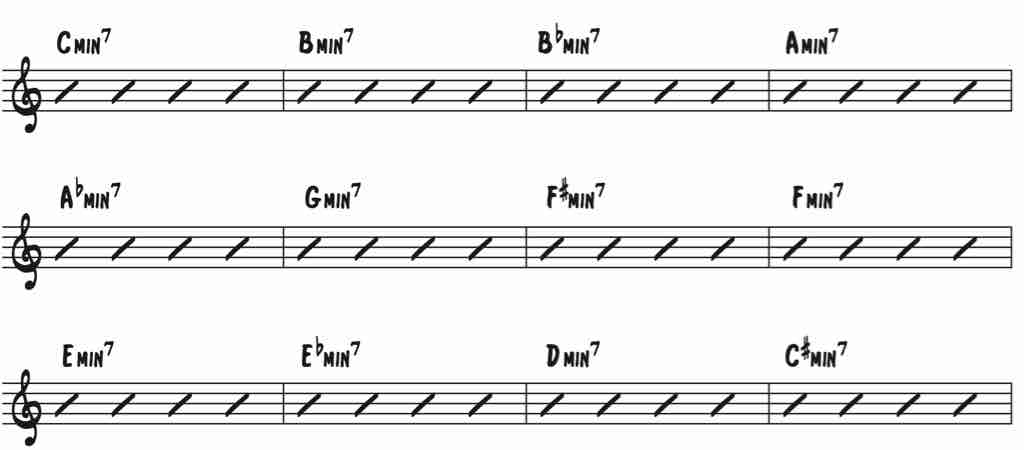
Playing it over the first few chords would look like this…

Really strive not to write any of these exercises out in all keys. The whole point is to be able to hear, feel, and think through the information in all keys.
Practicing something like this, moving it down in half steps and trying not to write it out, is a great way to get the information deep into your mind, which leads to using it spontaneously when you improvise.
So while it’s difficult and can feel monotonous at the time, know that the result of this dedicated practice is worth the effort.
Ok, Next, take only the first 2 beats of the minor piece, and play them down in half-steps like this…

You might do this with the second part of the line as well…

As you’ll begin to see, there is endless possibility to what you can practice, and we’ve only covered the minor piece so far!
Perhaps try starting on beat 2 and playing a shape like this…
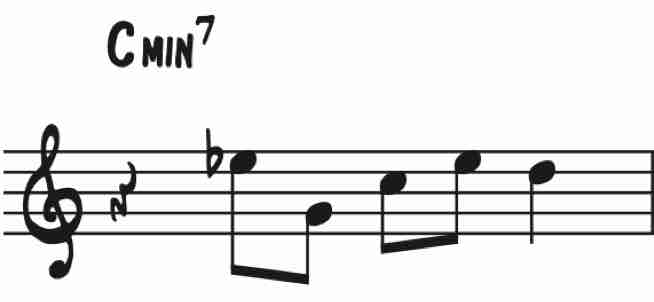
Make sure to run it through all 12 keys just like before. Remember, there are no rules. The whole idea is to take what you find from your heroes and use it to find new pathways into the information and practice it.
Here’s yet another variation you might try, simply leave out the first note and the phrase will sound quite a bit different.
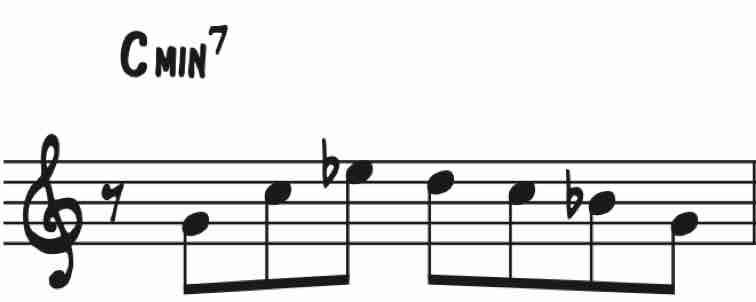
Are you starting to get it?
The more ways you practice this piece of the line, the more flexible you will become with the information.
No longer will you have to start it on beat 1, or have to play the exact shape, or have to use the same notes. With enough practice on many different variations, you’ll learn to improvise with the minor piece, and that’s what it’s all about…
But to get this flexibility, you have to practice it many different ways and get creative!
Practicing the Transition from ii to V7
Once you’ve practiced what Bird’s doing over the ii chord, it’s time to practice the transition from ii to V7…

And look at how he moves from ii to V7…

But rather than moving down in half steps, for this exercise, move it down in whole steps, So you’ll move from C- F7 to Bb- Eb7 because Bb- Eb7 is a whole step down from C- F7.
To cover all 12 keys, you have to practice two groups of chords.
Group 1:
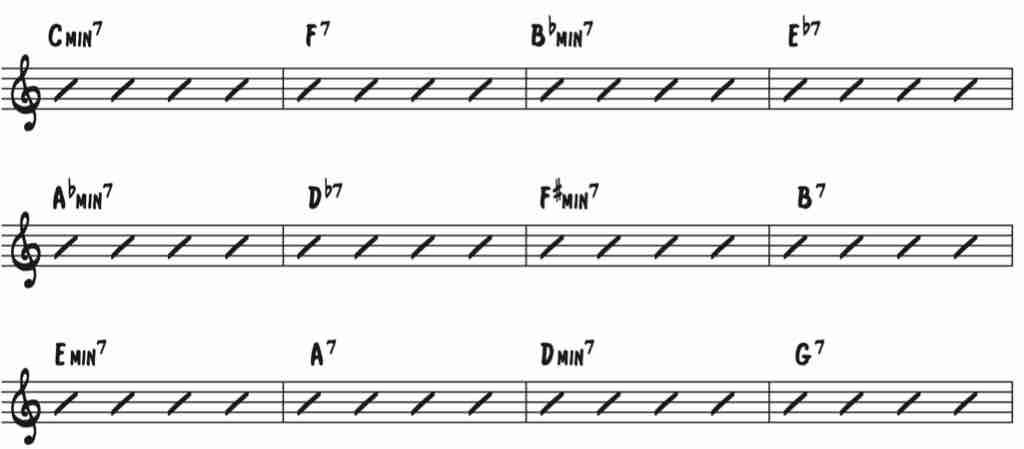
Group 2:
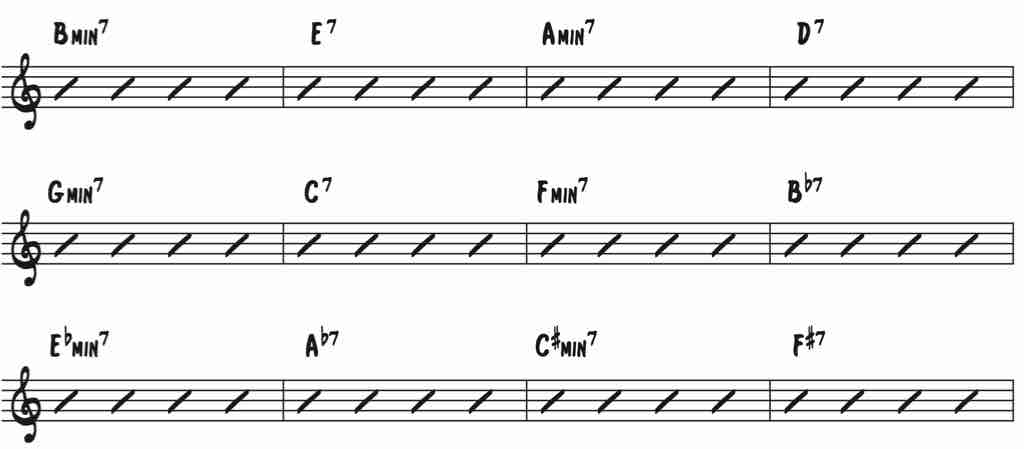
Start by playing the full minor piece into the 3rd of the V7 chord to get a feel for how it moves into the dominant chord.

Once you get a handle on that, rest for Beats 1 and 2, and play beats 3 and 4 of the minor piece into the V7 chord…

Starting at different points in the line like this is crucial to being able to use the information in a creative way, so next try starting on the and of 3…

And then perhaps practice starting on 2…

Then, try extending what you play on the V7 chord, for example, start the minor piece on the and of 1, and then over the V7 chord play more than just the resolution to the 3rd. (Make sure to take this through all keys)

Or try starting on the and of 3 as you practiced before, but play up the F7 chord…

There are endless ways to how you can practice this stuff, so experiment as much as you can, and realize that the more ways you practice something, the more flexibility you’ll have with it when you actually go to improvise.
Practicing the V7 Piece
Okay, now we’ll just work on what to play over the V7 piece…

And look at what Bird plays specifically over the dominant chord here…

Like the minor piece, we’ll move it down in half steps…
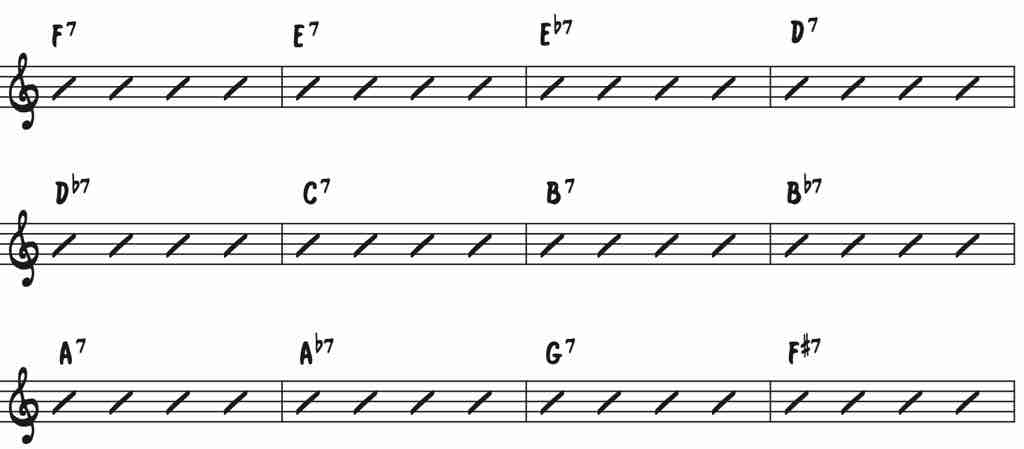
Start by taking exactly what Charlie Parker plays on the V7 chord through all the keys, moving down in half steps.

Now, instead of playing the b9 over the V7 chord, practice the idea with a natural 9…

You can always do this – modify the notes however you want. The whole idea is to practice any variations that you think will help you.
So now, practice playing just the first 2 beats of the V7 piece down in half steps.

And then, do the same thing using a natural 9.

The possibilities are endless! For instance, try starting on the upbeat by shifting the piece of the line forward with an eighth rest…
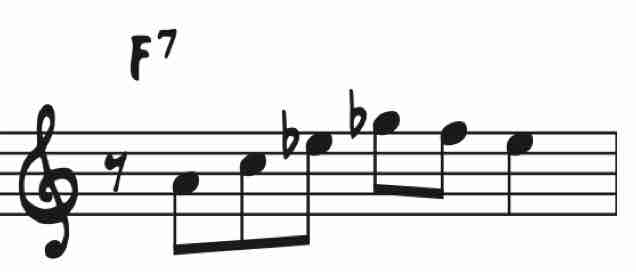
Or try holding a note out longer, like the b9…

Just keep experimenting. That’s the key that will take will allow you to squeeze the most out of these exercises.
Practicing the Transition from V7 to I
Next, work on how the V7 chord resolves to the major chord, the transition from V7 to I.

And we’ll aim to get under our fingers how Charlie Parker resolves the V7 chord…

Like the ii to V7 transition, you’ll play it down in whole steps. So F7 Bb Major will move to Eb7 Ab Major, and so on. This gives you two groups to hit all 12 keys…
Group 1:
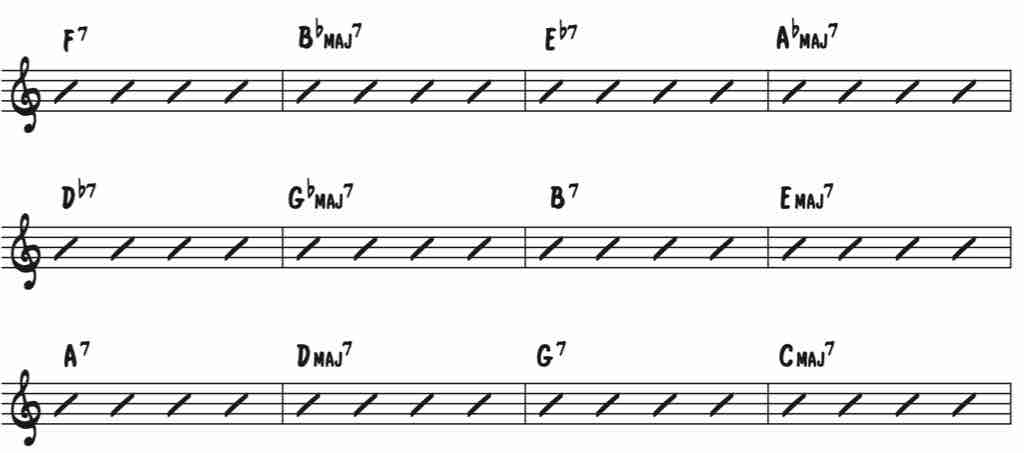
Group 2:
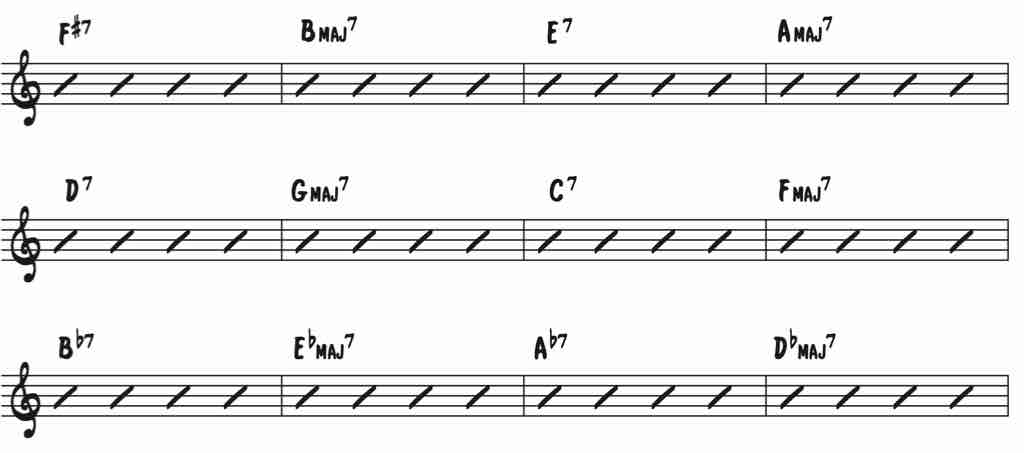
And just as we’ve done before, to begin, first play through the original transition.

Next, try starting the V7 piece from a different beat, like the and of 2…

And then, perhaps take the first 2 beats of what Bird plays here and use it to resolve to the I chord by starting it on beat 4…

Now try taking part of the minor piece and adding it to the exercise like this…

What other ways can you come up with to vary and practice the V7 to I transition?
Practicing the I Major Piece
And finally, we’ve reached the last piece of the line that we’ll practice, the I major piece.

Here we’ll gain dexterity with the shapes Bird uses over major chords…

This part of a line is often the most neglected because people assume that major chords are easy, you just play the major scale right?
In reality, you need language over major chords just as much as you need language over anything else, so make sure to spend some time gaining fluency with major as well.
Like the minor and dominant pieces, we’ll also practice the major piece down in half steps…
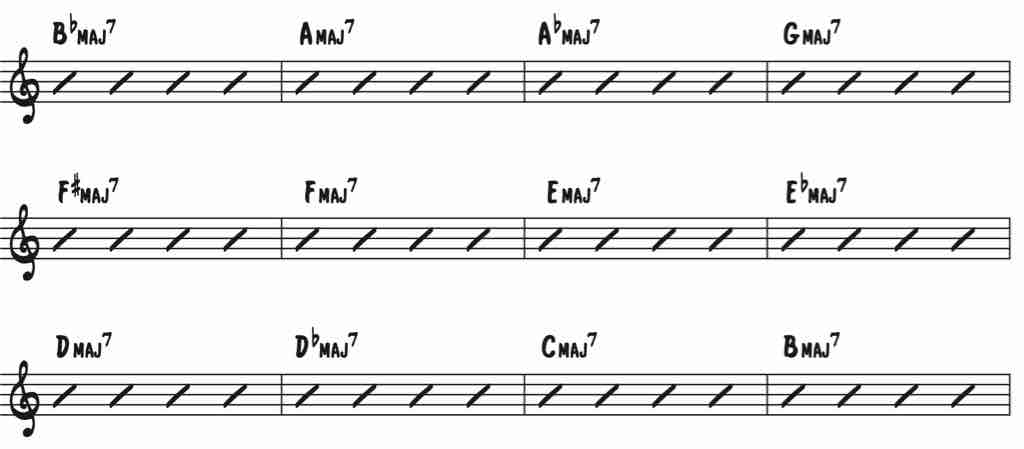
Start by playing Charlie Parker’s idea over these 2 bars, and move the idea down in half steps…
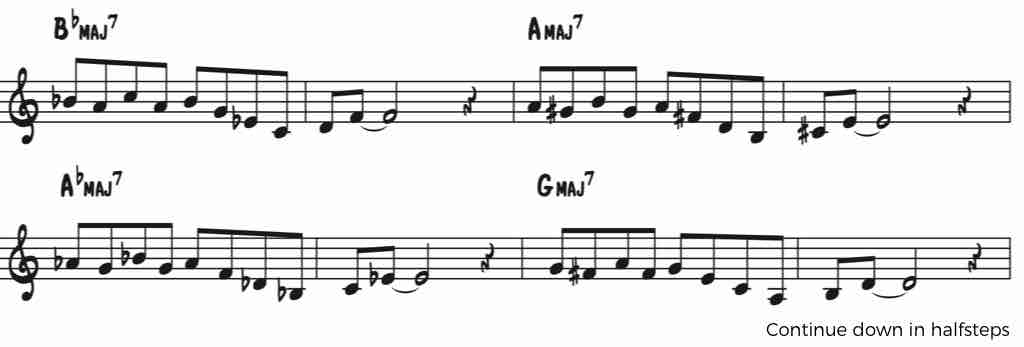
Next, try varying how you play the second piece of the line…

And then try another variation like this…
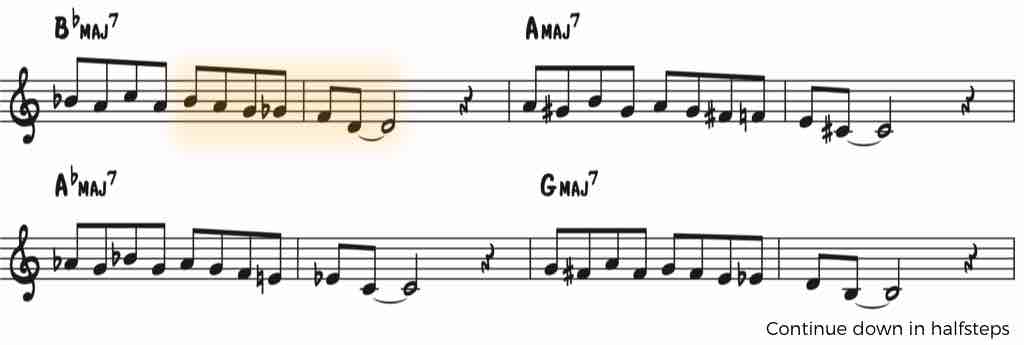
Now, spend some time and come up with your own variation on this major piece. There are a million things you could do…
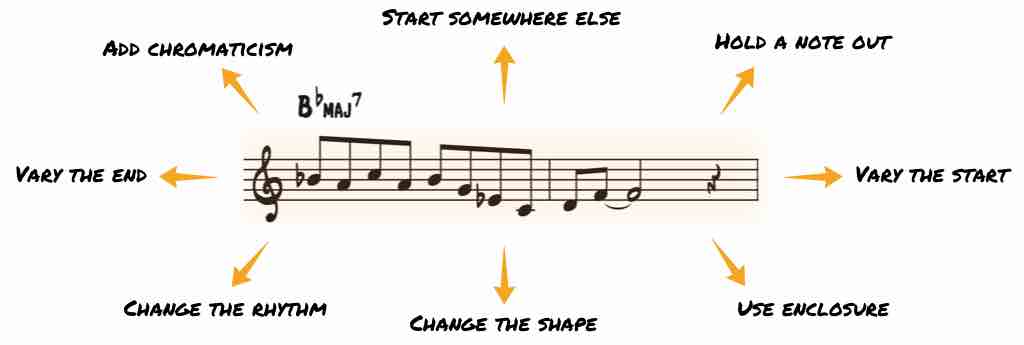
Explore and experiment, and keep going until you find things that you like!
Building your jazz vocabulary
Developing and building your personal jazz vocabulary is a process that takes time. But one of the main things I want to impart on you today is that every single line that you transcribe contains dozens of things to practice.
And that by breaking longer lines down into smaller components, you’ll gain ability with the line that you would not have attained any other way.
With any ii V7 I line, or a similar larger line, start by asking yourself the 5 questions that look at what a player is doing over a specific piece, and how the player is transitioning between pieces:
- What is the soloist playing over the ii chord?
- How is the soloist transitioning from ii to V7?
- What are they playing over the V7 chord?
- How are they transitioning from V7 to I?
- What is the soloist playing over the I chord?
Then get into the more detailed sub-questions that we asked ourselves – things like what type of content the player is using, what kind of devices, or what’s special or unique about the shape?
These are important aspects of the line to understand before you begin to practice it. Then, once you understand each piece of the line and each transition, start to create simple exercises that help you master the information.
You can begin with exactly what the soloist did, but strive to vary the line as much as possible as to learn how to access the information from multiple perspectives and multiple entry points.
Remember, this means practicing each piece from different beats, changing up the rhythms, altering notes, extending pieces of the line, inserting rest, adding chromaticism…
There’s so much you can do. Think about it, today we used one single 4 measure chunk of a Charlie Parker solo, and you probably have enough to practice for the next year!
That’s how deep this stuff is…
Go slowly and focus on mastering just a single element of the line at a time. If you do this, things will get easier and you’ll wake up one day and realize you have language for minor chords, dominant chords, major chords, and all the transitions between them.
And just like that your jazz vocabulary will grow faster than you ever thought possible!










